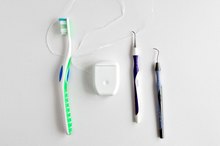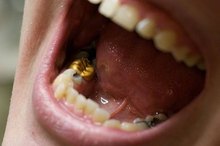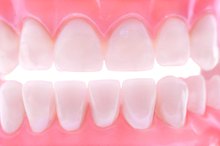How to Use a Dental Scaler
Maintaining good oral hygiene habits between dental visits is essential to good dental health 2. Brushing properly and flossing regularly is crucial. Using a dental scaler ensures that your teeth remain stain free and your gums remain healthy 1. The scaler removes tartar (also called calculus), plaque, stains, bacteria and debris from your teeth. Used once a week or as needed in conjunction with your brushing and flossing, the dental scaler helps keep your teeth and gums in optimal condition 1.
Brush your teeth and floss.
How to Use Peroxide in My Waterpik
Learn More
Stand in front of a mirror in a brightly lit area like the bathroom. Bright light helps you spot minuscule stains and calculus. Calculus is also called tartar; both are the hardened buildup of plaque left unremoved on your teeth.
Examine your teeth to spot stains, and note the areas where scaling will be necessary. These are the areas where stains are present or where flossing has not removed all debris. Use a dental mirror to check the back sides of teeth.
How to Use Dental Tools at Home to Remove Plaque
Learn More
Hold the tip of the dental scaler against the tooth at the gumline 1. Do not delve any deeper with a dental scaler; leave deeper cleaning procedures to a dental professional 1.
Glide the scaler away from the gumline. Feel for any roughness or "catches." The "catches" you may feel are tartar.
Gently drag the tip of the dental scaler away from the gumline, toward the biting edge of the tooth, removing all tartar, plaque and debris along the way 1.
Hold the scaler under running water to remove any debris caught on the tip.
Check to make sure all sides of the tooth (in between teeth, as well as the outside and inside surfaces) are smooth and have no more tartar. Repeat the scaling process for all areas of each individual tooth where debris or stains are located at or near the gumline.
Address the individual stains on teeth by taking the sharp point of the scaler and manually scraping away stains. Stains can build up from smoking or from frequently drinking coffee, tea or red wine; regular food consumption can also result in staining.
Clean all scalers and mirrors thoroughly; use a disinfectant or sanitizer. Towel dry, wrap the scaler in a dry paper towel or cloth and store in a closed container until next use.
Tips
Scaling once a month should suffice, but sometimes you may need it up to once a week, depending on how regularly and properly you brush and floss. If you smoke or regularly consume coffee, tea or red wine, your teeth will require scaling more often.
Warnings
Do not use home scaling to replace the ultrasonic scaling available at a dental office. Scaling below the gumline requires training, and you can cause damage to your gums and teeth you attempt it at home. Always keep your regular six-month dental appointments to scale below the gumline. For serious tartar buildup, your dentist may recommend a dental scaling and a root planing, which requires anesthesia.
Related Articles
References
Tips
- Scaling once a month should suffice, but sometimes you may need it up to once a week, depending on how regularly and properly you brush and floss. If you smoke or regularly consume coffee, tea or red wine, your teeth will require scaling more often.
Warnings
- Do not use home scaling to replace the ultrasonic scaling available at a dental office. Scaling below the gumline requires training, and you can cause damage to your gums and teeth you attempt it at home. Always keep your regular six-month dental appointments to scale below the gumline. For serious tartar buildup, your dentist may recommend a dental scaling and a root planing, which requires anesthesia.









